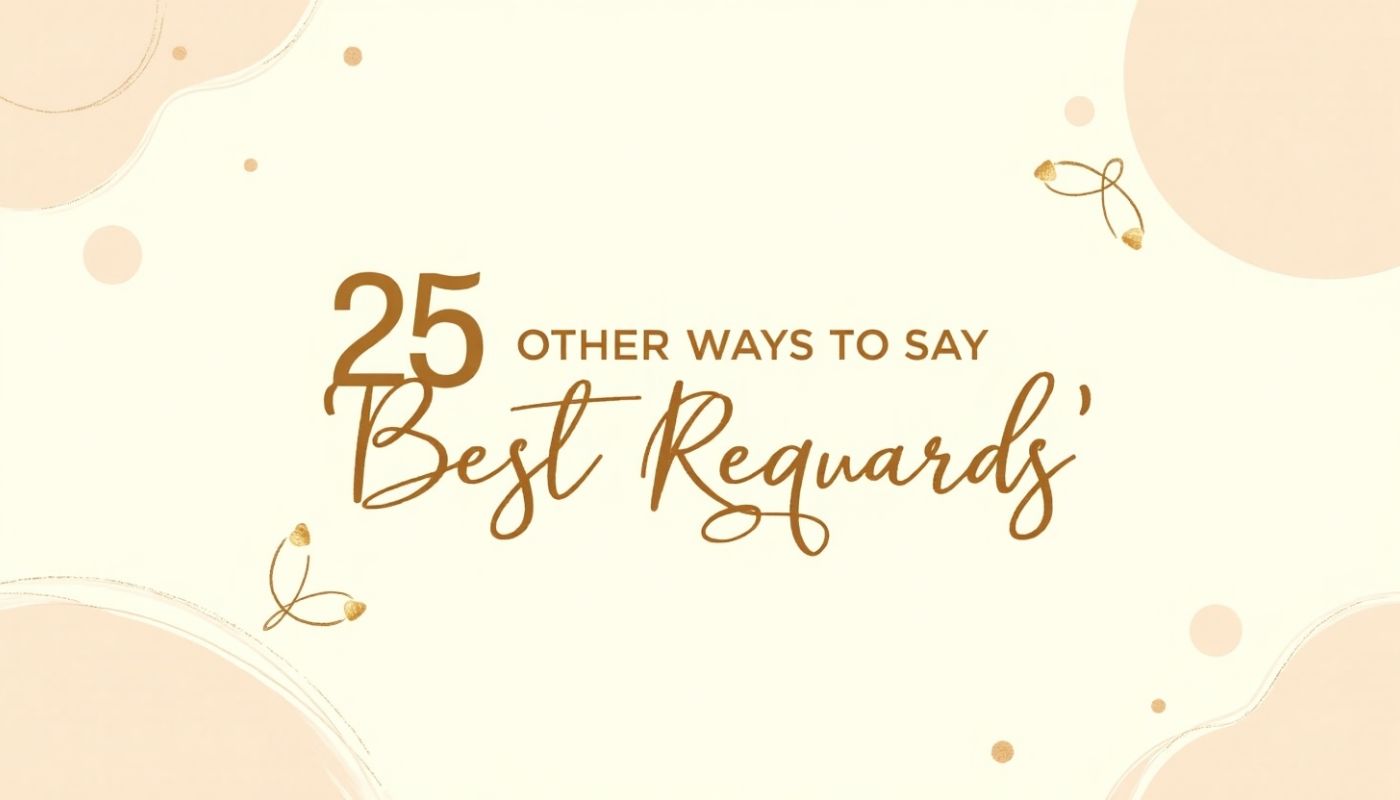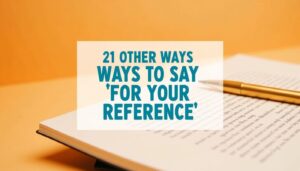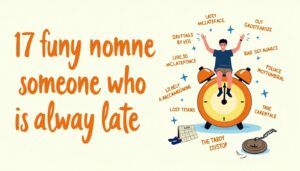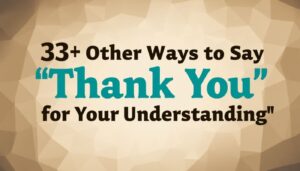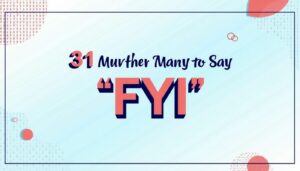In professional and personal communication, closing your message with the right phrase can leave a lasting impression. “Best regards” is commonly used, but it’s always good to have alternatives that fit different tones and contexts.
Whether you’re writing an email to a colleague, a formal letter, or a casual note, the closing should align with the overall tone of your message. This article provides you with 25 alternative ways to say “Best regards” in a variety of contexts to help you communicate more effectively and with greater impact.
Fondest Wishes
“Fondest wishes” conveys warmth and sincerity. It’s a great choice for sending positive thoughts and a sense of care, especially when you’re wishing someone well in a more personal or emotional context.
Example: “I hope your new project is a huge success! Fondest wishes, Sarah.”
Sending My Wishes
This phrase is simple but thoughtful. It works well for both formal and informal contexts, expressing that you’re thinking of the recipient.
Example: “Sending my wishes for a speedy recovery. Take care, John.”
Kindest Regards
“Kindest regards” strikes a balance between warmth and professionalism. It’s perfect for formal emails or letters but can still feel approachable.
Example: “Thank you for your help today. Kindest regards, Emily.”
All the Best
This is a friendly, informal closing that works great for emails, messages, and even letters. It expresses genuine good will and a sense of positivity.
Example: “All the best in your new role! Looking forward to hearing about your adventures. All the best, Mark.”
Best Wishes
“Best wishes” is slightly more personal than “Best regards,” making it an ideal choice for situations where you’re wishing someone well, whether for a personal milestone or a professional endeavor.
Example: “Best wishes for your wedding day! I hope it’s everything you dreamed of. Best wishes, Anna.”
Warm Regards
“Warm regards” is perfect for creating a positive, approachable tone while maintaining a level of professionalism. It conveys friendliness without being overly casual.
Example: “It was wonderful catching up with you. Warm regards, Michael.”
Warmest Greetings
This phrase is similar to “Warm regards,” but with a bit more emphasis on the warmth you’re sending. It’s ideal for when you want to express heartfelt sentiment.
Example: “Warmest greetings on your promotion! I’m thrilled for you. Warmest greetings, Laura.”
Respectfully Yours
This phrase carries a slightly more formal tone, making it a good choice for more official or professional correspondence. It’s often used in legal or business settings.
Example: “I look forward to our continued collaboration. Respectfully yours, James.”
With Sincere Regards
“With sincere regards” is a formal yet warm closing that communicates a genuine, thoughtful message. It’s perfect for professional or semi-formal communication.
Example: “Thank you for your prompt response. With sincere regards, Caroline.”
Cordially
Short, sweet, and formal, “Cordially” works well in professional letters or emails, especially when you’re maintaining a respectful tone.
Example: “I look forward to hearing from you. Cordially, Thomas.”
Yours Truly
A formal closing often seen in business correspondence or letters. It’s a respectful and classic way to end a more serious or official message.
Example: “Please feel free to reach out with any questions. Yours truly, Olivia.”
Take Care
“Take care” is casual and caring. It’s often used between friends, family, or close colleagues. This is perfect when the tone is relaxed and personal.
Example: “Hope to see you soon! Take care, John.”
All the Best to You
This is an enthusiastic variation of “All the best,” making it feel even more personal and warm. It works in both professional and casual settings.
Example: “I know you’ll do great things! All the best to you, Karen.”
Wishing You Well
This phrase conveys genuine goodwill, making it perfect for when you’re wishing someone success or a smooth journey.
Example: “Wishing you well on your new adventure. Wishing you well, Lisa.”
With Appreciation
A thoughtful and professional sign-off, “With appreciation” expresses gratitude and respect. It’s often used in more formal communications where gratitude is a key sentiment.
Example: “Thank you for your hard work on this project. With appreciation, Jennifer.”
Best of Luck
A more informal but encouraging phrase, “Best of luck” is perfect when you want to show support and wish success to someone embarking on a new challenge.
Example: “Best of luck with the new job! I’m sure you’ll be amazing. Best of luck, David.”
Cheers
Casual and friendly, “Cheers” works well in informal emails, messages, and when you’re writing to a colleague or friend with whom you have a relaxed relationship.
Example: “Thanks for the info! Cheers, Tom.”
With Best Wishes
A slightly more formal version of “Best wishes,” this closing works well when you want to convey thoughtful sentiment, particularly in more professional but still friendly communication.
Example: “With best wishes for your continued success. With best wishes, Rebecca.”
Stay Safe
If you’re sending a note during uncertain times, or just want to express concern for someone’s well-being, “Stay safe” is a compassionate and caring way to close a message.
Example: “Take care of yourself! Stay safe, Andy.”
Looking Forward
This phrase conveys anticipation and eagerness. It’s great when you want to end an email on a note of positivity and looking forward to future communication.
Example: “Looking forward to our next meeting. Looking forward, Sarah.”
Sincerely
“Sincerely” is the classic and formal closing phrase, especially in professional or official communication. It’s respectful and conveys sincerity.
Example: “I look forward to your response. Sincerely, Dr. Harrison.”
Kind Regards
“Kind regards” is a widely accepted and friendly alternative to “Best regards.” It strikes a balance between professionalism and warmth, making it appropriate for both business and personal settings. This phrase is especially fitting when you want to convey politeness while still feeling approachable.
Example: “Thank you for your help with the project. Kind regards, Sarah.”
Using “Kind regards” signals respect and gratitude without feeling overly formal. It’s great for communicating positive intent, especially in workplace emails or letters.
Warm Regards
“Warm regards” is a more personal variation that can be used when you want to add a touch of friendliness and warmth to your closing. It’s a wonderful choice for both professional emails and messages to friends or close colleagues, making it versatile and adaptable to a variety of situations.
Example: “I appreciate your prompt response. Warm regards, John.”
This phrase helps to build rapport and conveys a sense of friendliness and approachability, making it perfect for occasions where you want to feel connected yet still maintain a level of professionalism.
Sincerely
“Sincerely” is one of the most traditional and formal sign-offs, often used in business letters and formal emails. It expresses genuine respect and a professional tone, making it a great alternative when you need to close your message with utmost seriousness and professionalism.
Example: “I look forward to discussing this further. Sincerely, Emily.”
When you want to be more formal or are writing to someone you don’t know very well, “Sincerely” provides a polished and respectful way to end your communication, leaving a lasting, professional impression.
Best Wishes
“Best wishes” adds a positive and warm touch to your closing. It’s a slightly more personal phrase, and it’s typically used when you’re wishing someone well in a more casual or friendly context. While still appropriate in professional settings, it leans more toward informal communication, such as when congratulating someone or expressing your hopes for their success.
Example: “Wishing you all the best in your new role. Best wishes, David.”
This phrase is ideal when you want to convey a sense of optimism and encouragement, making it a great choice for congratulatory messages or any situation where you want to express positive feelings.
Conclusion
The way you close your message can significantly affect how your communication is received. By experimenting with the 25 alternatives provided, you can express your thoughts more thoughtfully and adapt your tone to various contexts, whether formal or casual.
Don’t hesitate to switch things up based on the relationship you share with the recipient or the specific situation.
Using different closings allows you to enhance your communication and make your messages feel more personal, professional, or warm. So, go ahead and get creative with your sign-offs – you may just find that the right phrase makes all the difference!

Mark Tony is a grammar expert with 5 years of experience, specializing in teaching English grammar, enhancing writing, reading, and speaking skills for diverse learners.
